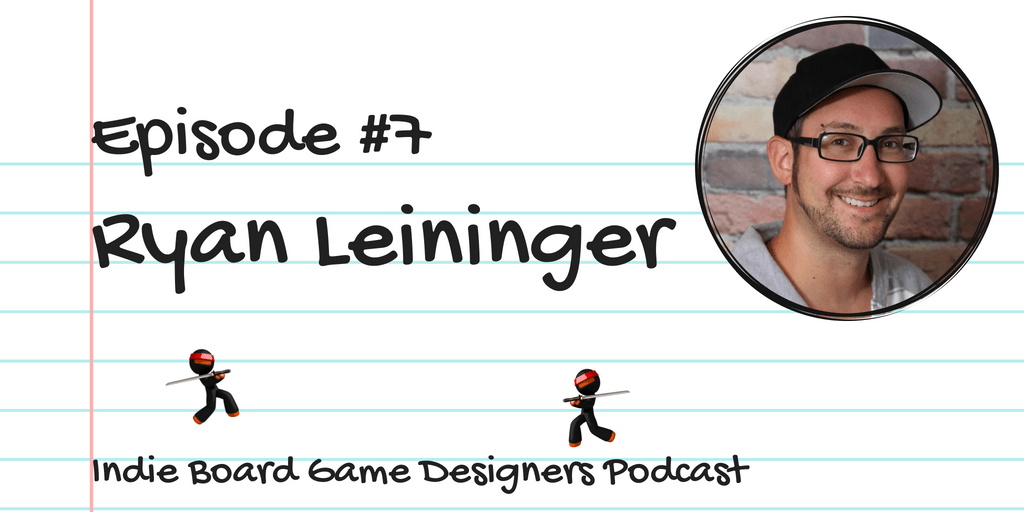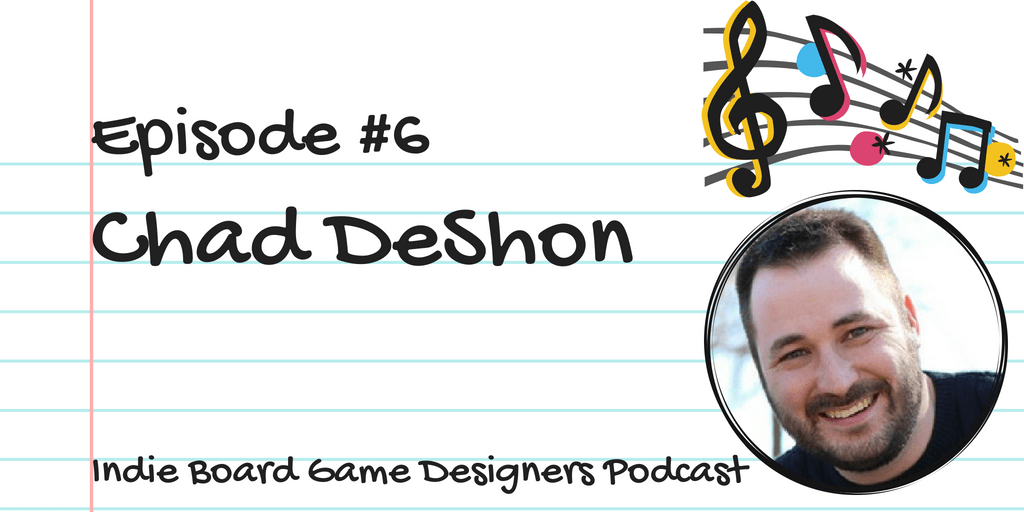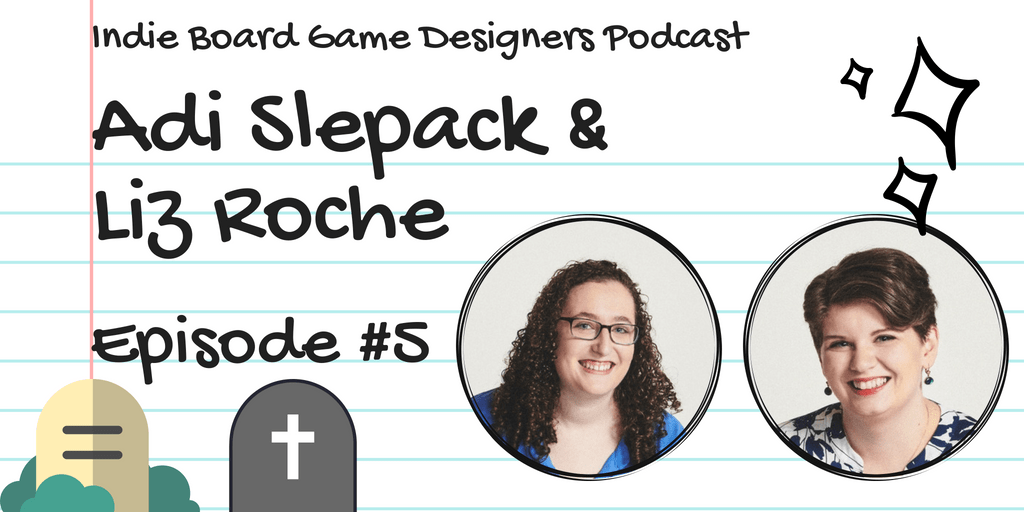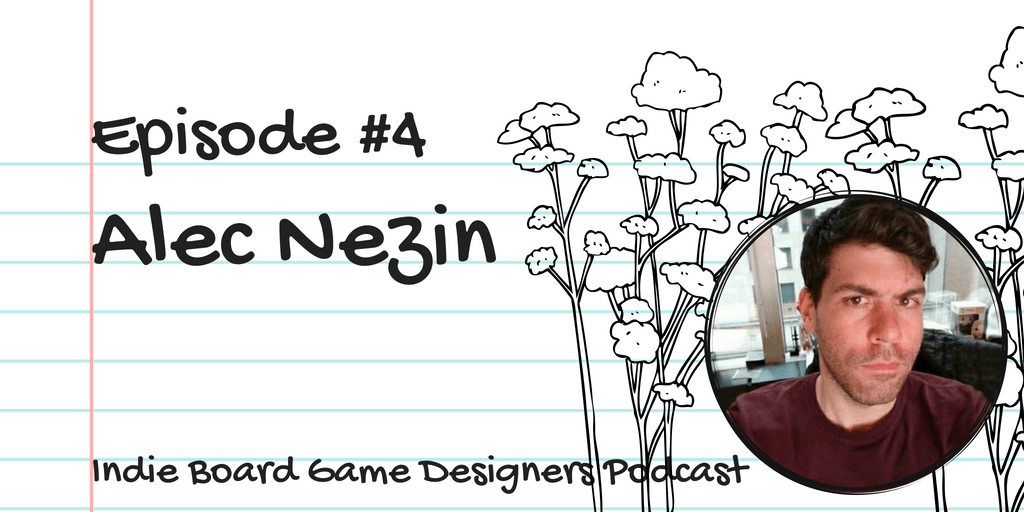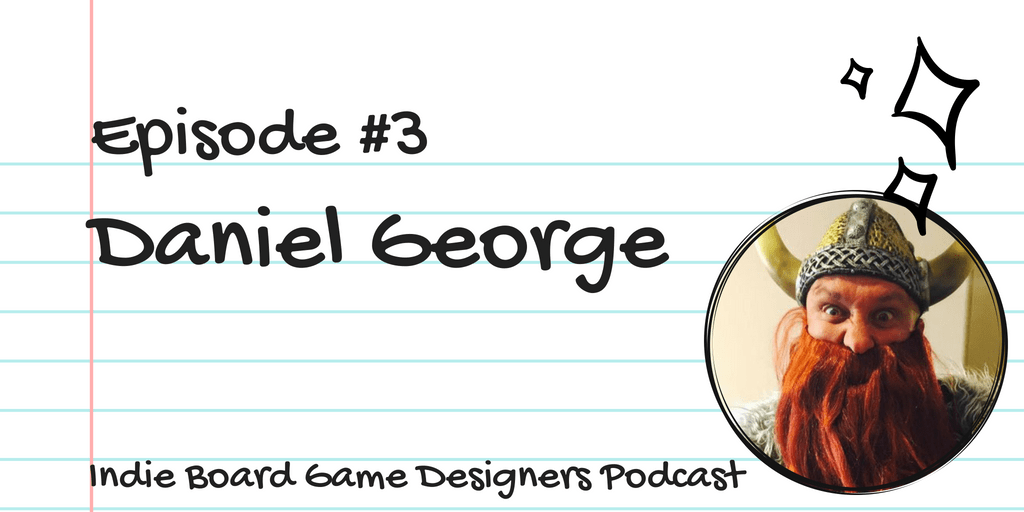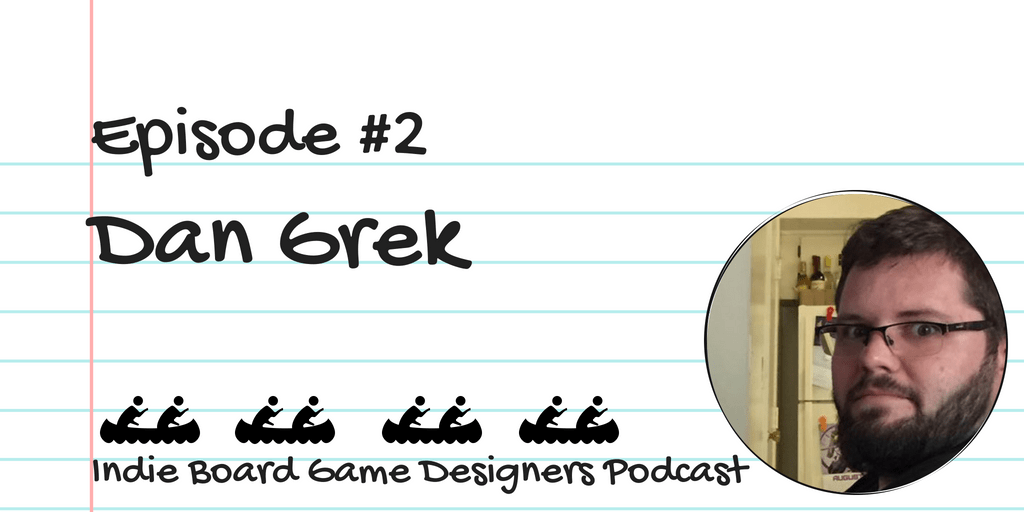Podcast: Play in new window | Download
Subscribe to podcast: Apple Podcasts | RSS
Patrick Rauland: Hello everyone and welcome to the Indie Board Game Designers Podcast. Today we're going to be talking with Allan Kirkeby, who is the designer behind an abstract strategy game called, Itchy Monkey, where you get to play lice on monkeys. It sounds a little gross, but it is a very, very cute game and we're gonna get into it in the show. So Allan, welcome to the show.
Allan Kirkeby: Thank you.
Patrick Rauland: Cool, alright. Now, okay so did I, 'cause you're from Denmark, so did I get your name 90% right or was it like a 100% off?
Allan Kirkeby: Oh, you were 90% okay. I mean, the last, it should be bewk, not boo, but that's okay.
Patrick Rauland: Awesome. Alright, thank you. So Allan, how did you get into board games and board game design?
Allan Kirkeby: Well I think I've always designed games. I think as a kid, I think I felt so a lexicon something about Olympics and I started designing board games based on all the Olympic disciplines. But then I ended up in the computer games industry and I got a bit away from the analog stuff. And then a few years back, I kind of picked it up again. I had some kids and I want to play a role playing game with them, but they don't understand the heavy English role playing rule books, so I kinda created a lightweight board game because I wanted to play with my kids and it needed to be in Danish and I spent like four years on that game and it was a really bad game. Well, it's okay to play with my kids because I could explain everything, but as potentially a game on the market, it was bad. When I started designing that, I then reached out to communities in Denmark and suddenly, I was very actively designing many different board games with very inspiring people in Denmark.
Patrick Rauland: Yeah. It sounds like a lot of people have that experience where they design a game for themselves or for their family and that's how they sort of get into it, which I think is really, really cool.
Allan Kirkeby: Yeah.
Patrick Rauland: So, I want to get into video games and sort of what you get out of the video games or I guess I want to ask, is there any overlap between the video game world and board game world?
Allan Kirkeby: Yeah, there is some overlap. I think the experience, I mean, if you design the game for yourself, many designers stop designing games because they love games and they wanna play around with an idea, so it's an egotistical thing, “I want to do this for myself.” But then, as you mature as a designer you basically start looking at, “I'm designing something that someone else will experience, so it has to be from their point of view if something is good.” And I think you can take that when you design computer games, it's the same thing. You start by building something digital because you think it's fun, so your first couple of games will be very much, only you like them. But, then eventually you start having testers and listening to what they say, so I think that's a big overlap.
Patrick Rauland: So, I love the theme of this game. How on Earth did you come up with a theme where you are lice and you're jumping from monkey to monkey?
Allan Kirkeby: I will try and make a short version out of this. I mean, at first I've been doing a lot of big games because that's what I wanted to do. So very big, heavy games and they are very difficult for others to sit down and play for three hours. Last year I started designing some smaller games and I wanted to do a strategy game and at first I wanted to do something with planets and migrating between planets. So in Itchy Monkeys, you have these big pieces, big around pieces and you have small lice on top of them. But initially, the initial idea was actually that they were planets and the small things that are now lice, they would be either martians or something like that.
Allan Kirkeby: But then, it didn't work because how would planets move around? I mean that's what they do in the game. You have the big round pieces moving around, so it didn't work with the theme and then I just came up with … before I talked to the publisher, my theme was that this was people walking around on a fair, on a fairground or on a marketplace and they had lice in their hair and they would bump into each other. So, it kind of grew out of a mechanism that worked well parted with an idea of planets, but then the mechanism grew away from the theme and then I had to find a new theme, so that's how I came up with it.
Patrick Rauland: I guess this sort of answers that age old design question of, did you start with a theme or mechanic? And it sounds like, do you typically start with a mechanic?
Allan Kirkeby: Yeah. I think that with small games, you typically start with a mechanic because with a small game there is just that mechanic. Many smaller games have a core mechanic that kind of carries the entire game. Whereas, if you make a bigger game, that's usually a combination of many different mechanic mechanisms that work together. So, usually with a small game it's very important that one single mechanism is either unique or fun enough to keep that one game running.
Patrick Rauland: So speaking of a unique mechanism, this is an abstract game. Those big tokens, those are the monkey tokens, there's the little lice tokens and every turn you can take a few different actions, but there's no cards, there's no dice. Did you try to make an abstract game where's just sort of pieces moving around the board?
Allan Kirkeby: Yeah, I think there's like … I love games with dice and every time you have dice and cards, you also have luck and randomness. And I think I wanted to go and create … back when I was a kid my father hated games, so he didn't want to play games unless it was chess because he hated losing down to luck. So, he's kind of an old fashioned kind of guy and doesn't really play games, but I usually sometimes have him in the back of my mind, trying to do something where there's not that much luck involved. But, in this particular game I wanted to try and do something where there was no luck at all. The only luck was depending on what your opponent does. So other than that, it's very … so yeah, it's abstract, but it usually ends with an abstract game if you want to remove the luck factor.
Patrick Rauland: I just think it's really interesting because I immediately start thinking about cards and dice and sort of, randomness and you've completely removed that. So I think that's a whole world of board game design that I haven't even looked at. So I think that's really, really cool. Okay, so you started with this mechanism of planets and things moving between the planets. What was the next thing, maybe you can give us an overview of your design process?
Allan Kirkeby: Well I talked to a lot of designers, so I've also come to realize that many designers designed in very different ways. One thing I like to do, I like to sit at a computer, maybe because I've been working with computers for many years, so I usually sit and do things digitally. So, I start with Photoshop or just Excel and I kind of sketch out my ideas and before I write anything down, I sometimes have a game in my head for two months or something, maybe notes on a few pieces of paper. But most of it, the game is kind of evolving alongside several other games in my head and then once I kind of get excited about, “This game can actually work, this will be cool.” Then I start working on it, then once I start working on a game I push all other ideas aside until that game that I'm working on now actually works. So, I don't know how did I go from … I think when I initially just thought of planets, the theme wasn't the important thing. That was mainly to … how do I create this game with no luck, so I need a board, I need pieces moving around, so then I came up with the mechanism
Allan Kirkeby: When you start designing and working with the mechanism, you don't think so much about the theme right there. Then you just start creating a mock board and you start creating prototype pieces and so on.
Patrick Rauland: I guess I wonder, when you're play testing a game like this do you have any theme or when you get play testing feedback are people like, “This doesn't feel like a planet game.” What do you do with that feedback when it's sort of themeless or theme light?
Allan Kirkeby: I think you can get as many different comments as there are people in the world, so it's very difficult to react to comments in the early stages But, usually I have a couple of close friends that I trust more than others, basically. When they give my comments, I kind of listen to it and if enough people say the theme doesn't work, I will change it.
Patrick Rauland: Got it. Got it. Okay, so about how long did this game take you to develop, from start to finish?
Allan Kirkeby: I think it's one of those games that kind of … I think I was lucky with this one. I came up with the idea of being able to migrate. You have small tokens on top of big tokens, right. So being able to migrate the small tokens over to others, that was the core idea and that basically worked. I mean, I had to do a little bit of balancing and because both players have the same pieces and have the same amount of pieces. Once the core grow your lice empire kind of worked, it just was there. I didn't have to do anything else really. So it was quite fast.
Patrick Rauland: So just to give me an idea, 'cause I'm still working on game number one, is quite fast like three months or is it like two years?
Allan Kirkeby: Well, okay, so quite fast is from, “I had the first idea” until I kind of thought that, “this is good enough to start showing to potential publishers” was probably, maybe intensively one week of work, spread out over a couple of months I guess. But then, when I had the prototype, then a couple of weeks go by where I don't work on it and then there's a small conference or a meet up of designers here in Denmark and then I bring the prototype and I show it and then I go home and do some tweaks and change some things based on the feedback. Then a couple of weeks go by again where I don't work on the game until I test it again. So it's stretched out over a long period of time, but the actual work wasn't that great on this game.
Patrick Rauland: Sure. Yeah, that totally makes sense. Okay, so let's change gears a little bit. So what type of games do you enjoy designing? And, maybe a different way of asking this is, once this game comes out, what are you gonna design?
Allan Kirkeby: Yeah, I've actually been designing a lot games over the past two years. There's a conference in Denmark called, ‘Fastaval' which is a role playing and board game conference. They have a competition each year in March where board game designers kind of submit a design and I've been part of that group of people for three, four years and I love it there. So they also kind of encouraged designing new things, so I've been trying many different things. But mostly, I attempt to create these kind of big, sprawling, worker placement, exploration games. I've just found that they are very difficult to sell or get produced or published because they are very expensive to create for a publisher.
Patrick Rauland: And just fill me in. Why are they so expensive, 'cause there's so many pieces or what's the expensive part there?
Allan Kirkeby: I think, yeah, because there's a lot pieces and I also think maybe there are different ways of working with a publisher, but I think the way I work with publishers is I create a game up to the prototype and then the publisher, if they like it, they pick it up and then they start to do a lot of work. They need to figure out what should the pieces look like? What kind of graphics should there be on it? It's like with Itchy Monkey, Black Box Adventures, the publisher, they actually created the graphics for that game. I did not have graphics when I pitched it to them.
Allan Kirkeby: So I think with a big game, it's all the components make the box and all the components in it just more expensive to produce even though it's in China. But, on top of that, it's a lot more man hours before you start producing it to actually design the components and build the manual and all that stuff. And then, the last thing is that getting people to buy a game like that is, well sometimes on Kickstarter it's easier for the big games if it just has miniatures, that's easy. For some games there's a lot of competition I think.
Patrick Rauland: Totally. So you've talked a few times about a meet up group and now there's this contest and you're in Denmark and I think you're the first international guest on the show. Do you think that there are differences in designing a game in the U.S. and when you're in Denmark?
Allan Kirkeby: I would guess there are, but I wouldn't presume to know what it's like to design in the States. I know a lot of people from the States from the computer game industry. So one difference I do know is the personal financial situation that you have as a human being is very different from the States than they are in Denmark. I'm not talking about Germany and so on. Because Denmark, we have a very good welfare system. We don't have 60 hour work weeks and so on. I know different states in the United States are different and so on. But, I think maybe that makes it easier for some Danish people to start out as a hobby. But, that also kind of makes people in Denmark tend to be more creative and not so focused on the market as such, where I think a lot of American designers are forced into thinking of this as a product. “It needs to be sold because if I want to spend a lot of time on it, I need to be able to make money because there's no safety net in our welfare system in the States.” I don't know for sure how it works, but I guess that's my view on it.
Patrick Rauland: I wish I knew the answer to that. I don't know what percent of indie game designers are sort of funding their lifestyle through their publishing company, but you're right, I'm sure it's really risky and really hard and I guess I don't envy them, 'cause I'm doing it on the side. Right? I have a full time job and I do game design as sort of an extra hobby.
Allan Kirkeby: Yeah, there's a Facebook group with board game designers, ‘Guild' or something like that and I asked this question about the finances and so on and I had a lot of feedback on a long thread of discussions. I could see some of the designers that actually commented, they had moved to a different state in the United States because it was cheaper to live there and that made it easier for them to take a risk on trying to be full time designer. So they could get a house at a much cheaper rate or they could live in commune or something like that. So I think that the similarities are that no matter where you do design, you have to be conscious about the choice you make. Do you do it as a hobby? Do you have a full time job and do it as a kind of hobby or do you try and take a risk and do it full time, but then you'll need to lower your private expenses to be able to survive actually.
Patrick Rauland: Totally. Okay, so I'm curious what … so for someone who's an aspiring game designer, what one resource would you recommend to them that's been really, really helpful for you?
Allan Kirkeby: Most of all I think, find your local community of other designers and hopefully they are nice people. If they are, they would be open and willing to share with you and then you kind of quid pro quo, you test their games and give the feedback and they test your game and that's very inspiring and gives you a lot of energy to go home because designing, it's a little bit an art form. It's also a craft, but in all artists, they kind get the blues. So sometimes, you think, “Ah, this sucks,” and you can't find the energy to continue designing your game. But, having a group of people that kind of encourages you to go on, that's very important to keep going and actually going that extra mile on the design, tweaking it and balancing it just to make it that much better. That helps a lot.
Allan Kirkeby: In terms of physical resources, I don't know, in the beginning I used the, what's it called, The Game Crafter?
Patrick Rauland: Yeah.
Allan Kirkeby: These places where you could print on demand things. I'm not using it any more because I've now bought a printer and so I just cut it out myself, all the components. In Germany, there's a website called spielmaterial.de and for Europeans, I think that's the go to place to buy Meeples and all the wooden components that you need in your prototypes.
Patrick Rauland: I'm curious. Wasn't The Game Crafter really expensive to ship you a package all the way in Denmark?
Allan Kirkeby: Yeah, but remember, that was when it was a hobby. I was creating this game for my kids. I had a full time job. I was actually very well paid. So I was like, “Yeah, screw it.” Just pay for that one game. I don't know, it's like $150.00 all in all, just to produce that one copy of the game and have it shipped, so I won't be doing that again I think.
Patrick Rauland: I think I'm lucky in that the first game I'm working on is a micro game and I think it's like $12.00 shipped and also I'm in the States, so it's much, much easier for me, much cheaper.
Allan Kirkeby: Yeah. I think there's a new … what's it called? Some German company has started something similar to Game Crafter. Oh, I can't remember what it's called. I was very envious when I started out that you had this Game Crafter company in the States, but now it's turning into a commercial for them.
Patrick Rauland: So you mentioned earlier about how you need to have a group of people that you spend time with, a community, because it's hard work to make a game and you sort of need them to motivate you. I guess I'm curious, what parts of game design are energizing to you? What parts of game design are exhausting to you?
Allan Kirkeby: I love creating and this is also a flaw I have. I love creating nice looking components … this is a flaw because I spend too much time polishing some icons or graphics components in Photoshop, when it's not really necessary. And, I actually end up throwing a lot of that work out because suddenly something doesn't work in the game anymore, some component, and that piece of graphic that I just spent five hours on is not worth anything. So that's a flaw, but I like that. That's very enjoyable. I think also taking the game, building iterations of the game. You always build this version of a game and then you bring it out and you try to test it with someone. I love that feeling, going, showing someone what you've created and getting the feedback and then knowing that you have to go back and tweak it and change it again. I love that part of it.
Allan Kirkeby: So what I don't like is … I know at one point when I feel the game, now it's good enough or now it's great or now it's finished, I usually get hit by that feeling before it is really finished. You know, in that process? So in the computer games industry, you do the debugging and so the game is finished, but it has a lot of errors and it's not really balanced. Most computer game developers hate that process because you're not creative any more. I think that's also, I don't hate the process, it's just a bit more tedious because that's when you're not creating something new any more, that's when you're just making sure the game is balanced and it plays well for everyone.
Patrick Rauland: So, what would you recommend to get through that? Is it going to groups? Is it spending an hour [inaudible 00:23:39] What tactics can you actually recommend to someone to push through the hard balancing stage of the game?
Allan Kirkeby: I don't know. The way I do it, it requires some kind of determination and you need to have this long term goal with your game because if it's just a hobby, then why bother with something that's annoying. If you really want to maybe see the game mass produced or at least published somehow, then you know that you have to do it and that gives you this drive to just go through even some of the stuff that's boring. So I think that helps. And then, in terms of what tools I use, I use Excel quite a lot and I just create a spreadsheet and every test I make, I write down notes and then I kind of create the notes as tasks and then I color them green every time I've solved that task. And it's kind of to do list, right?
Patrick Rauland: Sure.
Allan Kirkeby: But it gives you that feeling of progression. You always know that if all those things on that list are colored green, then I'm good. Then I've done good and if they're not green, then well, I just need to do those last three things even though they are kind of annoying. So it's kind of gameifying the boring process.
Patrick Rauland: So I just need to make a game called, ‘Building a Board Game' and there's just a whole bunch of tasks that you have to cross off and whoever crosses off all their tasks first, wins.
Allan Kirkeby: Yeah.
Patrick Rauland: Alright. So, you've been doing this for a while and you were also in the computer game world. How many unpublished and half finished games do you have on your shelf?
Allan Kirkeby: About ten I think, maybe a bit more. Some of them … I have a lot of games, more games, I have 20 or 30 games that are just notes in a folder on my computer. Sometimes when you're just about to go to sleep, you lay down in your bed and you turn off the lights and then the idea hits you and just go, “Damn, now I need to get out of bed and just write it down.” So I have a lot of those, but then I have actual playable prototypes in various stages, I think I have about ten.
Patrick Rauland: That seems pretty reasonable I think. Okay, so getting near the end here, what does success look like for you? What do you need to do to feel successful in this hobby or business?
Allan Kirkeby: That's a good question. Right now, I've done a lot of computer games and I have them published and they are on the market. So, it's several stages, I think. The first stage would be to just see one of my games published and hopefully people like it and then also hold that box in my hand. Right? I think all designers kind of dream about holding that newly printed box in their hand with their own game. But, that's just step one. I would love to have many games published. Obviously I would love for some of the games to win an award or at least be recognized by a fan base that, “This is a good game.” If it's possible to make a living from this, this is not a short term goal I have, but if it's eventually possible that would be fine. But, as it is now, I actually love the regular job I have and doing this on the side
Allan Kirkeby: So one comment here, and I know we're running out of time, but when I was young, I started doing music and I actually got a record deal. Then I got a computer games company deal producing music for that company, but when it turned into a full time job, it took away some of the joy at creating the music because now I was not just creating the music. Then I started creating the computer games and suddenly games started getting published and I also realized that when a game has been published you're just on to working on the next game. And so, the previous game is just forgotten right away because if it's your full time job, you have to keep publishing games all the time. I think I'm not in a hurry to immediately get in to that kind of flow of working with board games. I don't want to, let's say, already next year just be working on 15 different games and all of them need to be published and once one is published, I'm kind of forgetting about it. So right now I'm kind of savoring and enjoying working with the games and having it as kind of a side job or something, next to my day job.
Patrick Rauland: I love that answer. No. I really, really do because I think you're right, a lot of publishing companies publish all the time and it's nice just to make a game and then sit back, relax and enjoy and maybe play it a few times. Ya know what I mean, once you've gone through all that? I think for me, there's probably something similar where once I actually, 'cause I really do wanna make my own game, once I get that point I want to like my game enough that I will sit down and play it with friends. I hope I haven't played it out.
Allan Kirkeby: Yeah. I think you can also get into a kind of burnout. To stay creative, you need to have empty space of non-creativity. That's my opinion anyway. I don't know if everyone works that way. But, I need these kind of empty periods where I kind of get inspiration and then I kind of let it all loose on something new and that creativity can be more difficult to keep up if you do this 100% of your time, every waking hour. You have to come up with a new game right now. You can't let it grow kind of organically like you can if it's a part time thing.
Patrick Rauland: I love that answer, love it. Alright, so I've got a little game here at the end. It's called ‘Overrated Underrated.' Have you ever played the game?
Allan Kirkeby: No.
Patrick Rauland: So basically, I'm gonna say a word or a phrase and I'm gonna force you to take a position if it's either overrated by the world at large or if it's underrated. So, as an example I might say Coca Cola and then you would give me one sentence why it's overrated or underrated. Got it?
Allan Kirkeby: Okay, fair enough.
Patrick Rauland: Alright, cool. So the very first one, board game cafes. Are they overrated or underrated?
Allan Kirkeby: They are underrated by, let's say, non-board gamer. And they are overrated by board gamers.
Patrick Rauland: Ooooh. Why are they overrated by board gamers?
Allan Kirkeby: Maybe they aren't. I think they are so very different. There are a couple of cafes in Denmark. One of them, they do a lot for the community of designers and for gamers who come by and want to try and play games with other people. We also have another café where it's almost just a dating café where people bring a date and they play games, but there's no matchmaking with new players and so on. So it's basically just a regular café that just happens to have board games on the shelf. So, I think if I have to choose one it would be underrated and that's because for non-board gamers, they don't know what it is and they kind of shun them or basically, “Oh you know it's nerds and they play with miniature figures that they paint and it smells like sweat because that's what nerds do.” Really, most board game cafes are actually really nice places with great coffee and so on. I think it's underrated.
Patrick Rauland: Love it. Love it. Alright now, do you know the species Bonobos?
Allan Kirkeby: I know of it. I've heard the name, yeah.
Patrick Rauland: Alright, so Bonobos are a type of monkey. Are Bonobos overrated or underrated?
Allan Kirkeby: I think they are underrated.
Patrick Rauland: Any reasons why?
Allan Kirkeby: I'm trying to quickly do a wiki search on this one. I'm trying to figure out … I don't know they look very human. They look very intelligent.
Patrick Rauland: Okay. Cool. Love it.
Allan Kirkeby: I don't know anything about Bonobos.
Patrick Rauland: That's fair. Fair. Alright, so third one, is Spiel, the conference at Essen, is that overrated or underrated?
Allan Kirkeby: That's actually difficult because who's overrating? Who's underrating? I think it's exactly rated as it should be. Maybe it's a bit … I think it's underrated. But, I'm fairly new. I've only been doing this very actively with board games for the last three or four years and I've been to Essen Spiel three or four times now, the last three years and I love it. It's very chaotic, but it's also making business contacts and trying to pitch your games. It's a great place to do that. Everyone is very forthcoming and nice to you. I think it's underrated right now, but it might turn out to be in five years that it's overrated because maybe it's getting too crowded. I hope they find a way to solve that. It's not a great answer to that question.
Patrick Rauland: Love it. Love it. Alright, last one. Waffles. Overrated? Underrated?
Allan Kirkeby: Underrated.
Patrick Rauland: Because?
Allan Kirkeby: Well, I love anything that you can put soft ice on.
Patrick Rauland: Oh, frosting?
Allan Kirkeby: No. What's it called, soft ice cream? We just call it soft ice here in Denmark.
Patrick Rauland: Oh. I'd say in the States, we don't often put anything on our waffles. It's maybe syrup, but we don't put ice cream on them. So maybe I need to try waffles with ice cream and then I will understand.
Allan Kirkeby: But, maybe that's because … okay when you say waffles, you think about the kind of flat things. In my head, I got the picture of something that's called a Belgian Waffle, which is a lot thicker. So it has the inside is a bit like the consistency of a soft doughnut, but the outside is crisp, so when you bite into it, it's kind of crunchy, but then when you get in to the core and then the crunchiness comes from its kind of sweet, I don't know, kind of sugar coated and then when you put soft ice cream on it and just eat it with a fork, I love that.
Patrick Rauland: Got it. So, because of this conversation, I am now looking at waffle pictures in Google images and I'm getting hungry.
Allan Kirkeby: Did you find something with ice cream on it?
Patrick Rauland: A few, yeah, a few. Cool. This has been great. Allan, thanks for being on the show. Where can people find you online?
Allan Kirkeby: I'm on Facebook and LinkedIn. I don't have a website yet and I'm thinking about, maybe I should get that. I'm also on Board Game Geek. I've been on there for a few years, but I've not been active. But, now when my game ‘Itchy Monkey' is coming out, I've started being more active there.
Patrick Rauland: So would you be comfortable sharing your Board Game Geek user name just so that people have some way of reaching out to you?
Allan Kirkeby: I think it's just my real name actually. Just without the spacing between the first and last name.
Patrick Rauland: And just for people … so I have no idea how to spell your name. So, since this is an audio podcast it's Allan, right? A-l-l-a-n, right?
Allan Kirkeby: Yes.
Patrick Rauland: And then, K-i-r-k-e-b-y?
Allan Kirkeby: Yes. Correct.
Patrick Rauland: Okay. Cool, alright cool. Awesome. Oh and where can people find your game, Itchy Monkey? Where can they find it?
Allan Kirkeby: It's right now on Kickstarter. There's 20 or I don't know, some days left. So hopefully people hearing this will go and look at it and if they like it, back it.
Patrick Rauland: Love it.
Allan Kirkeby: We need a few more backers.
Patrick Rauland: Got it. Got it. Cool. Well, thanks for doing this. If you, dear listener, like this podcast, please leave a review on iTunes. If you leave a review, Allan told me that he's willing to drive by to your house and delouse you, so if you're infested with lice, he can help out.
Allan Kirkeby: Sure. In the States.
Patrick Rauland: And you can visit the site at indieboardgamedesigners.com and you can follow me on Twitter @bftrick on Twitter. And until next time, happy designing. Thanks. Bye bye.


